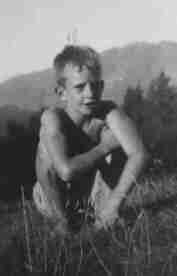Over the past two weeks I have been reading a book on the history of the photograph as art. Quite interesting, with some fantastic images that I have not previously come across.
Included is this at the top of the page by Henry Peach Robinson, dated 1858 -
Apparently it caused a considerable stir as "inappropriate" and "immoral". Why? Well the clue is in part in the title "Fading Away". A family gathered at the slow death of a daughter and sister.
Presented as one example of how attitutes to images can change over time.
BTW the techniques used are more of interest than the image. Apparently this was made from 5 separate images - an early example of photographic manipulation...

3 comments:
Might be the first documented case of "photoshopping"...
Agreed, TF, but that was not the reason for the image creating a considerable storm.
Oh, to explain the need for 5 separate negatives...
There is a very wide range of light levels apparent; from the cloud and fence detail outside the window to the folds in the mother's black skirt.
Even with modern film - with its very "forgiving" emulsions - such a huge range of light would require very careful handling, and likely at least three images. Use of a flash would alleviate the problem, but in turn would make the image harsh with unwanted and unnatural shadows.
The five negatives would cover (my guess) -
1. The open window, possibly including the silhouette of the father.
2. The interior of the room, possibly including the silhouette of the father.
3. The mother.
4. The daughter on the bed
5. The daughter standing at the end of the bed.
Each of those separate images may well have been complete - all of the elements present - rather than taken separately. The most difficult would have been the very white dress on the black of the bed. Trying to get that to show the detail achieved would have required very careful judgement of the light available.
I base my judgement on the detail shown, the likely light levels, and reflective qualities of each part of the image. Remember - no light meter, no flash, no studio lighting. All of that image was achieved with natural light and very slow emulsion, and extremely careful printing.
Why was it so controversial?
Post a Comment